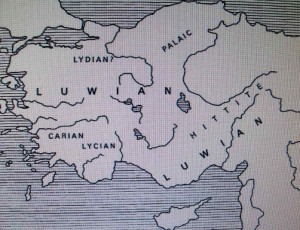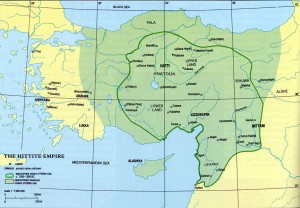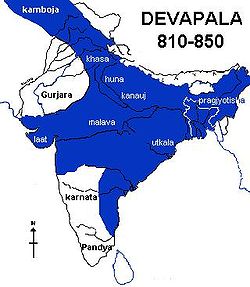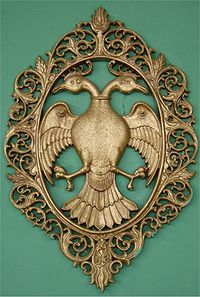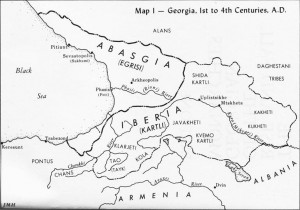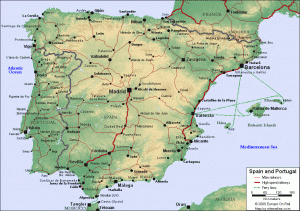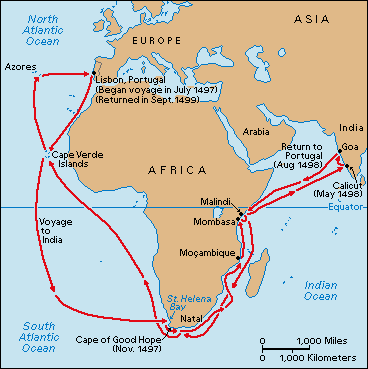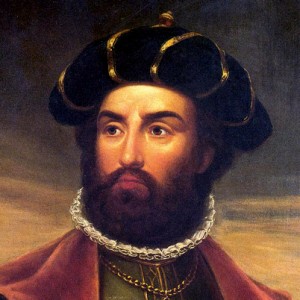Matsya or Mitanni Kingdom of Anatolia?
We have checked history of ancient Anatolia.. We found Haihaya,Pala, Zala , Lau , Kush , Hastinga presence there. Surprising Matsya presence was also there.Surprisingly , Hurrian kingdom Mitanni is clue to Matsya kingdom of India and present day Hungary. Mitanni kingdom ,its Gods and capital “Washukanni “ connects the kingdom with ancient Matsya kingdom of Bharatvarsha.
Mitanni people were worshipers of Sun ,Indra and Varuna. Present Kurdish people are clue to ancient Anatolia. Washukanni was capital of Mitanni. If we look at facts about Matsya kingdom of India then Uparichara Vasu was first king of Matsya kingdom of India before Mahabharat war faught. Now let us check historical facts about their migration story.
Mitanni kingdom of Anatolia
Mitanni or Hanigalbat (Hanigalbat, Khanigalbat ) was a loosely organized Hurrian -speaking state in northern Syria and south-east Anatolia from ca. 1500 BC -1300 BC. Founded by an Indo-Aryan ruling class governing a predominately Hurrian population, Mitanni came to be a regional power after the Hittite destruction of Amorite Babylon created a power vacum in Mesopotamia. At the beginning of its history, Mitanni’s major rival was Egypt under the Thutmosids. However, with the ascent of the Hittite empire, Mitanni and Egypt made an alliance to protect their mutual interests from the threat of Hittite domination. At the height of its power, during the 14th century BC, it had outposts centered around its capital, Washukanni, whose location has been determined by archaeologists to be on the headwaters of the Khabur River. Eventually, Mitanni succumbed to Hittite and later Assyrian attacks, and was reduced to the status of a province of the Middle Assyrian Empire.
Their sphere of influence is shown in Hurrian place names, personal names and the spread through Syria of a distinct pottery type.
The ethnicity of the people of Mitanni is difficult to ascertain. A treatise on the training of chariot horses contains a number of Indo-Aryan glosses. Kammenhuber (1968) suggested that this vocabulary was derived from the still undivided Indo -Iranian language, but Mayrhofer (1974) has shown that specifically Indo-Aryan features are present.
The names of the Mitanni aristocracy frequently are of Indo-Aryan origin, but it is specifically their deities which show Indo –Aryan roots (Mitra, Varuna, Indra, Nasatya), though some think that they are probably more immediately related to the Kassites. The common people’s language, the Hurrian languge is neither Indo -Eueropean nor Semitic. Hurrian, and thus the Hurrians, are therefore believed to be relatives of Urartu, both belonging to the Hurro –Uratian language family. indicates that the royal family of Mitanni was by then speaking Hurrian as well.
King Barattarna of Mitanni expanded the kingdom west to Halab (Aleppo) and made Idrimi of Alalakh his vassal. The state of Kizzuwatna in the west also shifted its allegiance to Mitanni and Arrapha and Assyria in the east had become Mitannian vassal states by the mid 15th century BC. The nation grew stronger during the reign of Shaushtatar but the Hurrians were keen to keep the Hittites inside the Anatolian highland. Kizzuwatna in the west and Ishuva in the north were important allies against the hostile Hittites.
Link to Mitani kindom.
Link -2 for more facts.
Capital Washukanni
Washukanni was the capital of the Hurrian kingdom of Mitanni, from c. 1500 BC to the 13th century BC. Its precise location is unknown, but it is widely thought to have existed on one of the tributaries of the Khabur River. Some scholars believe it is identical with the later, ancient city of Sikan. Washukanni may be located under the so-far unexcavated mound of Tell el Fakhariya, near Gozan in Syria, to the east of the Euphrates river.
Washukanni means beautiful source/springhead. The kurdish town Sikan (which scholars believe, its Wassukani) is named as Serêkanî or Serêkaniyê in Kurdish and it means Headwater.
The city is known to have been sacked by the Hittites under Suppiluliumas (reigned c.1344–1322 BC) in the first years of his reign, whose treaty inscription relates that he installed a Hurrian vassal king, Shattiwaza. The city was sacked again by the Assyrian king Adad Nivari I around 1290 BC, but very little else is known of its history.
For further facts refer following Book Link “Études mithriaques”
edited by Jacques Duchesne-Guillemin, Congrès International d&Etud
Book link
Now let us look facts about ancient Matsya Janpad of Bharatvarsha.
Matsya Janpad of India
Matsya or Machcha (Sanskrit for fish), classically called the Mese, was the name of a tribe and the state of the Vedic civilization of India. It lay to south of the kingdom of Kurus and west of the Yamuna which separated it from the kingdom of Panchalas. It roughly corresponded to former state of Jaipur in Rajasthan, and included the whole of Alwar with portions of Bharatpur. The capital of Matsya was at Viratanagara (modern Bairat) which is said to have been named after its founder king Virata. In Pali literature, the Matsya tribe is usually associated with the Sursena. The western Matsya was the hill tract on the north bank of Chambal. Meenas are considered the brothers and kinsmen of Virata, the ruler of Virat Nagar. They ruled this area (near to Virat Nagar) till 11th century CE.
Matsya Kingdom was founded by fishermen community who later attained kingship. The Sanskrit word Matsya means fish. Satyavati, the wife of Kuru king Santanu was from this community. King Verata, a Matsya king, founded the kingdom of Viarata. He was the father-in-law of Abhimanyu, the son of Arjuna. The epic Mahabharata relates the founder of Matsya kingdom to the ruler of Chedi, viz Uparichara Vasu.
Fishing was the main occupation of the people who lived near river Sarswati River. After the river dried up, they migrated to river Charmanwati now known as Chambal meaning fish in Dravidan language. Krishna Dwajpayana Vyasa, was son of Satyavati who belonged to this fishermen community and yet was a Vedic scholar.
Other than the Matsya kingdom to the south of Kuru Kingdom, which falls in the Alwar ,Bharatpur districts of Rajasthan, the epic refers to many other (as many as, six other) Matsya kingdoms. The main Matsyas under Virata had its capital named Viratnagri which is now known as Bairat in Jaipur district of Rajasthan. Upaplvya was another famous city in this kingdom.
In the ancient times Rajasthan was ruled by a dynasty of Meenas which had the emblem of Fish like the Pandyan Kingdom (Paravar, Karava, Kariyar) of the south. The name Mina is derived from Meen and the Minas descent from the Matsya Avatar (Meena Avatar)of God. Matsya Avatar (Mina Avatar) takes place to save the pious and the first man, Manu.
The first Matsya king was mentioned to be the son of a Chedi king named Uparichara Vasu. He was a Paurava, meaning a king beloning to the Puru dynasty (1,63). Apart from the five royal sons of this king, he had a son and a daughter born of a women of fisherman community. The male child, in due cource established the Matsya Kingdom and founded the royal dynasty called Matsya Dynasti. The female child lived as a member of fishermen community. Her descendants established as fishermen on the banks of river Yamuna, in the kingdom of Kurus. The famous Kuru king Santnu’s wife Satyawati was from this fishermen community. The author of Mahabharata, vis Krishna Dwajpayana Vyasa and the Kuru kings viz Chitrangada and Vichitravirya were the sons of Satyavati. Pandavas and Kauravas where the grandsons of Vichitravirya.(1,63).
The most famous Matsya kingdom was the one under the rule of king Virata, the ally of the Pandavas. Most of the other Matsyas joined with the Kauravas in Kurukshetra War. Sahdeva on his military campaign to the south, to collect tribute for Yudhisthira’s Rajasuya sacrifice, encountered this Matysas. He also encountered the Matsya kingdom that lay to the south of Matsya-proper (Virata Kingdom).
On the side of Pandava
Pandavas selected the Virata Kingdom to be their abode for one year, to live in anonymity, after the expiry of their twelve-year long forest life, both (12-years of forest life and one year of life in anonymity) being the conditions set up by their enemies viz the Kaurava, to give them back their kingdom (4,1). They become ally of Pandava.
On the side of Kauravas
Some Matsya tribes (possibly all except the Virata Kingdom and the Southern Matsyas) allied with the Kauravas (5-161,162). At (6,18) they were described as one among the 12 tribes (The Abhishahas, the Surasenas, the Sivis, and the Vasatis, the Salweyas, the Matsyas, the Amvashtas, the Trigartas, and the Kekayas, the Sauviras, the Kitavas and another tribe) that protected the Kaurava commander-in-chief Bhishma. At (8,56) they were mentioned along with the Bahlikas, and the Kaikayas, the Vasatas, the Madras, and Saindhavas.
Uparichara Vasu
Uparichara Vasu was a king in the race of Puru. He invaded the Chedi kingdom and later became famous as the king of Chedi. He had two wives named Girika and Adrika both belonging to two different non-Vedic tribes. Girika was a mountain dweller, where as Adrika was a fisher-women.
Satyavati : Daughter of Vasu
Satyavati (also spelled Satyawati) was the queen of the Kuru king Shantanu of Hastinapur and the great-grandmother of the Pandava and Kaurava princes (principal characters of the Mahabharta, one of the principal texts in Hindu Mythology). She is also the mother of the seer Vyasa, author of the epic. Her story appears in the Mahabharata, the Harivamsa and the Devi Bhagavata Purana.
Daughter of the chedi king Vasu (also known as Uparichara Vasu) and a cursed Apsara (celestial nymph)-turned-fish Adrika, Satyavati was brought up as a commoner – the adopted daughter of a fisherman-chieftain (who was also a ferryman, Paravas) on the banks of the river Yamuna. Due to the smell emanating from her body she was known as Matsyagandha (“She who has the smell of fish”), and helped her father in his job as a ferryman.
As a young woman Satyavati met the wandering Rishi (sage) Parashara, who fathered her son Vyasa out of wedlock. The sage also gave her a musky fragrance, which earned her names like Yojanagandha (“She whose fragrance is spread for a Yojana (8-9 miles)”) and Gandhavati (“fragrant one”).
Later King Shantanu, captivated by her fragrance and beauty, fell in love with Satyavati and asked her to marry him. She married Santanu on condition that their children inherit the throne, denying the birthright of Santanu’s eldest son (and crown prince) Bhishma. Satyavati bore Shantanu two children, Chitrangada and Vichitravirya. After Shantanu’s death, she and her princely sons ruled the kingdom. Although both her sons died childless, she arranged for her first son Vyasa to father the children of the two widows of Vichitravirya through Niyoga.
Migration story of Matsya
Now let us look at migration story of Matsya.
Now we know that Mitanni or Hanigalbat (Hanigalbat, Khanigalbat cuneiform ) was a loosely organized Hurrian -speaking state in northern Syria and south-east Anatolia from ca. 1500 BC -1300 BC.
Hurrian /Hungarian/ kingdom of Khwarezmia
The Hungarian nation throughout it’s known history has at least three distinct names, not counting the other six tribal names which are also traceable back into antiquity. ( the other tribal names are Kari, Kasi, Kurt-Gyarmat, Tarjan/Tarxan, Jenu, Nyek) These three names whose roots are to be discussed refered more to the leading nation, which also could have had its unique independent origin. Starting with the oldest references and advancing to the newest are the following at different times and different language
Another name of this area, or perhaps more specificly one of the kingdoms of the Subarian people was known as “Hurri, Gurri”. The Hurri language is generally the accepted term today for the language of the people of Subar-Tu. Their language was also agglutinative like Sumerian and had many words in common, yet it was a distinct language from it. Hungarian also has some words in common with both Sumerian, Hurrian and Elamite.Elamite is considered a sister tongue of Dravidian who are now constricted to southern India, but were once living in the north. It is no accident that Hungarian also shares many words also with Dravidian and Turkic languages also. All of this indicates that they were at one time less isolated from one another.
The Hurrian descendants also founded the kingdom of Urartu as well as the central Asian kingdom of Khwarezmia,( Indian word Kharwa for fisherman is outcome of that kingdom?) next to the Aral Sea.( S.P.Tolstov, Ancient Khwarezmia, Moscow, 1947 ) [Some Russian researchers claim that Khwarezmia and its area was the possible origin of the Finno-Ugrian and Altaic nations!] The people of Subartu (Hurrians and Subars) lived predominantly in northern Mesopotamia but in very ancient times also in southern Mesopotamia.
Link will say facts in Detail
Hungary / Magyars / the Manicha-Er group
Hungary is a landlocked country in central Europe. It is situated in the Carpethian Basin and is bordered by Slovakia to the north, Ukraine and Romania to the east, Serbia and Croatia to the south, Slovenia to the southwest and Austria to the west. The capital and largest city is Budapest. Hungary is a member of the European Union,NATO. The official language is Hungarian, also known as Magyar, which is part of the Finno – Ugric group and is the most widely spoken non-Indo -European language in Europe.
The freshly unified Magyars (Hungarians) led by Arpad settled in the Carpethian Basin starting in 895. According to linguists, they originated from an ancient Uralic -speaking population that formerly inhabited the forested area between the Volga river and the Ural mountains.
.
The Magyar tribes/”Meshchera”
The Magyar tribes were the fundamental political units whose framework the Hungarians (Magyars) lived within, until these Clans from Asia, more accurately from the region of Ural Mountains, invaded the Carpathian Basin and established the Principality of Hungary.
The locality in which the Hungarians, the Manicha-Er group, emerged was between the Volga river and the Ural Mountains. Between the 8th and 5th centuries BC, the Magyars embarked upon their independent existence and the early period of the proto Magyar language began. Some say the name “Meshchera” relates to the Hungarians’ self-name “magyar”.
Budapest or Bairat?
The name “Budapest” is the composition of the city names “Buda” and “Pest”, since they were united (together with Obuda) to become a single city in 1873. One of the first occurrences of the combined name “Buda-Pest” was in 1831 in the book “Világ” (“World” / “Light”), written by Count Istvan Szechenyi.
The origins of the words “Buda” and “Pest” are obscure. According to chronicles from the Middle Ages, the name “Buda” comes from the name of its founder, Bleda (Buda), the brother of the Hunnic ruler Attila. The theory that “Buda” was named after a person is also supported by modern scholars. An alternative explanation suggests that “Buda” derives from the Slavic word ” voda” (“water”), a translation of the Latin name ” Aquincum”, which was the main Roman settlement in the region.
Yes Vilag is mysterious word and give clue to Virat ,founded by Matsya Viratraj , who fought for Pandava.
Book link to “Vilag “
Now we know that Hungary stands for Magyar tribe and its root word is “Meshchera”.Let us dig further for “The Meshchera tribe”.
The Meshchera
The Meshchera language was a Uralic spoken by the Meshchera tribe, in what is today the Oka River basin in Russia. Very little is known about the language, but it was probably closely related to the Mordvinic languages Moksha and Erzya. Meshchera language probably became extinct by the 16th century.
Link for more facts
Following link says that “The world is changing! A thousand years ago the political and ethnical map was very different. The forest plains of the North-East of Europe, from the Urals to the Lapland was populated by the Finno-Ugrian peoples, the ancestors of modern Finns, Hungarians, Estonians, Mordvins, Mari, Udmurts and many others, including those living in the Russian North and Western Siberia.”
Second link
Further Following link about MESHCHERA also give clue to Finnish tribes: Merya and Murom .The link says that ……
MESHCHERA
Most people associate the word meshchera with the territory of forests, pit bogs and lakes between the Klyazma and Oka rivers called Meshchera lowlands. This name originates from a medieval tribe of Volga-Finns, the Meshchera.
Written records
The first Russian document mentioning the Meshchera is Tolkovaya Paleya (13c. AD). The tribe was also often mentioned in Russian chronicles and other documents before the 16th century.
The Will of the Moscow prince Ivan Ivanovich (1358) mentions the village of Meshcherka which, as we can learn from another document, had been purchased from the indigenous Meshcherian prince Alexander Ukovich. There are some indications that this western Meshcherian dynasty had been converted to Orthodoxy and was a vassal of the Moscow princes.
Generally speaking, we can easily find the Meshchera in Russian documents of the 13th-16th centuries, unlike the other Finnish tribes: Merya and Murom which had been assimilated by Slavs before the 10th-11th centuries AD. A number of the documents mentions the Meshchera in connection with the Kazan campaign of Ivan the Terrible (16th c.). Some of those mentions relate to the Temnikov Meshchera, a state where the indigenous Meshchera of that time had lost their national identity in many ways by being assimilated by the Tatars and Mordvins. There is a written confirmation of this by Prince A.M. Kurbsky, which referred to the spoken Mordvin language in the Meshchera land.
Link for More facts
Following link also give clues to Meshchera tribe…
The Lost World of Meshchera
“The world is changing! A thousand years ago the political and ethnical map was very different. The forest plains of the North-East of Europe, from the Urals to the Lapland was populated by the Finno-Ugrian peoples, the ancestors of modern Finns, Hungarians, Estonians, Mordvins, Mari, Udmurts and many others, including those living in the Russian North and Western Siberia.
Not all Finno-Ugrian nations survived. One of those extinct was Meshchera. The name of this nation apparently originates from the word “machjar” which was a self-name in the Middle Ages. The Meshcha descendants kept their own phonetics for a long time, preserving hard “ch” – strange for a Russian ear [18].
The spelling and pronunciation of “Machjar” (maybe “Mezhchar”]) have been transformed in accordance with the norms of the Old Russian language. These changes made the new word “Meshchera” to sound very Russian, like the Old-Russian words “veshchy”, “meshchati”, “meshchenye”, “peshchera” and now create an illusion of its “russianness” including relation to the Russian word “mshara” (a pit bog). We also doubt with transformation to “Meshchera” the Mordvin word “meshkyar” (a bee keeper)
It is much more difficult to find the origin of the primary word. Some say is relates to the Mari word “mezh” (wool) the others – to the Baltic “mezh” (forest)]. But why the Balts, living in the same virgin forests called the Meshchera “the forest people”? Some say the name “Meshchera” relates to the Hungarians’ self-name “magyar” But the chronicles say the Meshchera had own language . which is now, alas, extinct.”
Merya / Muromian / Meshchera
The Volga Finns (sometimes referred to as Eastern Finns) are a historical group of Indigenous people of Russia whose descendants include the Mari people, the Erzya and the Moksha Mordyins, as well as extinct Merya, Muromian and Meshchera people.The Permians are sometimes also grouped as Volga Finns.
The modern representatives of Volga Finns live in the basins of the Sura and Moksha Rivers, as well as (in smaller numbers) in the interfluve between the Volga and the Belaya Rivers. The Mari language has two dialects, the Meadow Mari and the Hill Mari.
Traditionally the Mari and the Mordvinic languages ( Erzya and Moksha) were forming a Volga–Finnic or Volgaic group within the Finno -permic branch of the Uralic language family, suggested by linguists like Robert Austerlitz. (1968), Aurélien Sauvageot & Karl Heinrich Menges (1973), Harald Harrmann (1974) and Charles Frederick Voegelin & Florence Marie Voegelin (1977), and rejected by others like Bjorn Collinder (1965) and Robert Thomas Harms (1974).
The Mari or Cheremis ( You read about Meenas. They were dwelling at Charmavati or Chambal river) have traditionally lived along the Volga and Kama rivers in Russia. The majority of Maris today live in the Mari EI Republic, with significant populations in the Tatarstan and Bashkortostan republics.
The Merya people (also Merä) inhabited a territory corresponding roughly to what is now the area of the Golden Ring or Zalesye region of Russia including the modern-day Moskow, Yaroslavl ,kastroma,Ivanova, and Vladimir oblasts.
They were briefly mentioned in the 6th century by Jordens (as Merens) and were later described in more detail by the Primary chronicle. Soviet archaeologists believed that the capital of the Merya was Sarskoe Gorodishche on the bank of the Nero lake to the south of Rostov. They are thought to have been peacefully assimilated by the East slavs after their territory became incorporated in the Kievan Rus in the 11th century.
Moscow / Meshchera /Matsya
The Meshchera lived in the territory between the Oka river and the Klyazma river. It was a land of forests, Bogs and lakes. The area is still called the Meshchera lowlands.
This is in stark contrast to the related tribes Merya and Muroma, which appear to have been assimilated by the East Slavs by the 10th and the 11th centuries. Ivan II, prince of Moscow, wrote in his will, 1358, about the village Meshcherka, which he had bought from the native Meshcherian chieftain Alexander Ukovich. The village appears to have been converted to the Christian Orthodox faith and to have been a vassal of Muscow.
The Meschiera (along with Mordua ,sibir and a few other harder-to-interpret groups) are mentioned in the “Province of Russia” on the Venetian Fra Mauro Map (ca. 1450)
Link for further facts.
We know that when Pandava in Guptvasa stayed in Matsya Virat kingdom. Surprisingly There is town called Virrat In Pirkanmaa region of finland. There is Satkunta – Maakunta province too there. in funland.Is it merely co –incidence? Aisa Bhi Hota hai?
Khwarezm
Khwarezm, or Chorasmia, is a large Oasis region on the Amy Darya river in western Central Asia, which borders to the north the (former) Aral sea, to the east the Kyzylkum desert, to the south the Karakum desert and to the west the Ustyurt plateau. It was the center of the (indigenous) Khwarezmian civilization and a series of kingdoms, whose capitals were (among others) kath, Gurangi (the modern Loneurgenc) and, from the 16th century on, Khiva. Today Khwarezm belongs partly to Uzbekistan and partly to Turkmenistan.
The Arab geographer Yagut al –Hamawi wrote that the name was a compound (in Persian) of khwar and razm , referring to the abundance of cooked fish as a main diet of the peoples of this area.
C.E.Bosworth however, believes the Persian name to be made up of meaning “the sun” and meaning “Earth”, designating “the land from which the sun rises”.Another view is that the Iranic compound stands for “lowland” from kh(w)ar “low” and zam “earth, land.”. Khwarezm is indeed the lowest region in Central Asia (except for the Caspian Sea to the far west), located on the delta of the Amu Darya on the southern shores of the Aral sea. Various forms of khwar/khar/khor/hor are commonly used also in the Persian Gulf to stand for tidal flats, marshland, or tidal bays (e.g., Khor Musa,Khor Abdallah, Hor al – Azami,Hor al Himar, etc.)
The name also appears in Achaemenid inscriptions as Huvarazmish, which is declared to be part of the Persian Empire.
Some of the early scholars believed Khwarezm to be what ancient Avestic texts refer to as Airyanem Vaejah (“Ariyaneh Waeje”; later Middle Persian Iran vij). These sources claim that Old Urgench, which was the capital of ancient Khwarezm for many years, was actually Ourva, the eighth land of Ahura Mazda mentioned in the Pahalavi text of Vendidad. However, Michael Witzel, a researcher in early Indo-European history, believes that “Airyanem Vaejah” was located in what is now Afghanistan, the northern areas of which were a part of ancient Khwarezm and Greater Khorasan. Others, however, disagree. University of Hawai historian Elton L Daniel believes Khwarezm to be the “most likely locale” corresponding to the original home of the Avestan people , and Denkhoda calls Khwarezm (“the cradle of the Aryan tribe”).
………
Virrat in Finland
Virrat is a town and municipality of Finland.
It is part of the Pirkanmaa region. The town has a population of 7,498 (31 January 2011) and covers an area of 1,299.07 square kilometres (501.57 sq mi)
The municipality is unilingually Finnish. Virrat crater on Mars is named after it.
Major lakes in the area are Toisvesi, by which the town of Virrat is located, and Tarjanne at the border of the municipalities of Virrat, Mantta –Vippula and Rouvesi .There is Sat Kunta – Maakunta procvince there too in Finland. Means Pandava again stayed in Matsyadesh in Guptvas (Hiding period)? Is it not Sanatan? Aisa Bhi Hota Hai?
Satakunta
Satakunta (Swedish: Satakunda, Latin: Finnia Septentrionalis or Satagundia) is a region (maakunta / landskap) of Finland, part of the former Western finland Province. It borders the regions of Finland proper,Pirkanmaa, Southern Ostrobothinia and Ostrobothnia. The main city of the region is Pori. The name of the region literally means Hundred. The historical province of same name was a larger area within Finland, covering modern Satakunta as well as much of Pirkanmaa…..
Link to Satakunta
Link to similar Ideology
Link for further facts
Link for Kurdistan
————————————————
At the end of the reasrech
Matsyaraja – son of Hanuman
Hanuman became more important in the medieval period, and came to be portrayed as the ideal devotee (Bhakt) of Rama. His characterization as a lifelong Brahmchari (celibate) was another important development during this period. The myth that Hanuman’s celibacy is the source of his strength became popular among the wrestlers in India. The celibacy or brahmacharya aspect of Hanuman is not mentioned in the original Ramayana. The original Valmiki Ramayana mentions that Bharata presented Hanuman with 16 maidens as a reward. The non-Indian versions of Ramayana, such as the Thai Ramakein, mention that Hanuman had relationships with multiple women, including Svayamprabha, Benjakaya (Vibhisana’s daughter), Suvannamaccha Suvannamaccha and even Ravana’s wife Mandodari. According to these versions of the Ramayana , Macchanu is son of Hanuman borne by Suvannamaccha, daughter of Ravana. The Jain text Paumacariya also mentions that Hanuman married Lankasundari, the daughter of Lanka’s chief defender Bajramukha.
Matsyaraj / Makardhwaj /River Machchu of Saurashtra ?
Another legend says that a demigod named Matsyaraja (also known as Makardhwaja or Matsyagarbha) claimed to be his son. Matsyaraja’s birth is explained as follows: a fish (matsya) was impregnated by the drops of Hanuman’s sweat, while he was bathing in the ocean.
Link to Hanumanji and His son
Meshchera people
The Volga Finns (sometimes referred to as Eastern Finns) are a historical group of indigenous peoples of Russia whose descendants include the Mari people, the Erzya and the Moksha Mordvins, as well as extinct Merya, Muromian and Meshchera people. The Permians are sometimes also grouped as Volga Finns.
The modern representatives of Volga Finns live in the basins of the Sura and Moksha River, as well as (in smaller numbers) in the interfluve between the Volga and the Belaya Rivers. The Mari Language has two dialects, the Meadow Mari and the Hill Mari.
Link to Meshchera people people
————————————
At the end of research
Anarta / Anatolia / Atlantis
We have found lost continent Atlantis
At the end of research we find that Anatolia was carrying history of ancient Anarta kingdom of Bharatvarsha. That Shryati founded in present day Gujarat. capital city of Anarta was Kushasttali. Kushsthali was beneath ocean. ya Anarta = lost continent of Atlantis. Now we find that original root word of Crete was Kursawar or Kussattar. .Shryati happened to be prior to Ram and river Saryu was named after Sharyati. Pl read The detail I mention in the chapter 7(1).
lINK TO ARCHAEOLOGICAL RESEARCH OF KUSHSTHALI .CAPITAL BENEATH OCEAN
lINK TO THE BOOK OF HELENE PETROVNA BLAVATSKY ( BLIEVE ME HELENE HAS =NOT SOMETHING BUT EVRYTHING – TO DO WITH KRISHA AND PURTICULARLY WITH BALDEV AND ..HALAR..ANARTA) READ PAGE -239
Now if we find all these indian Royals in Anatolia..then it is not matter of Surprise.they were carrying their traditions only.
PL READ DETAILS IN CHAPTER – 7(1)of Book section

